Marine Drafting Weights
© Frank Ford, 12/8/00; Photos by FF, 2000
On my most recent trip to Santa Cruz, I stopped in to visit Ed Claxton in his shop. If you haven't seen or played one of Ed's fine guitars, you've missed a real treat. He was in the midst of designing a new body shape when I walked in, and I must admit he surprised me with this amazing old timer's technique for drawing perfect curves.
Ed had spend some time designing and building wooden boats, and had picked up some interesting tricks of the trade. This is one of his favorites.
Now, he made these lead weights himself, using the "whale motif" of the old time marine architect tool. He was quick to suggest that the shape is not significant at all:
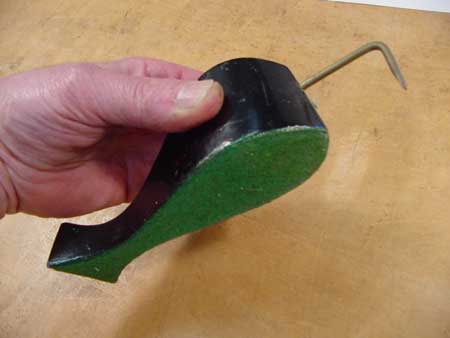
What is significant is the pointy rod sticking out of the end. The exact weight is also not significant - these weights are fairly heavy, a pound or two each.
To get a perfect, regular curve, he simply sticks the weights on a thin strip of perfectly clear white pine, bends it to the shape, and holds it in place with the weights:

Ed says white pine is the most regular bending wood he's tried, but he stresses the fact that almost any really clear grain wood will do nicely. The exact dimensions of the wood aren't significant, although it must be consistent in thickness and width, and bend easily to the curves desired. He has several thicknesses for different radius curves.
Now, here's the really cool trick:
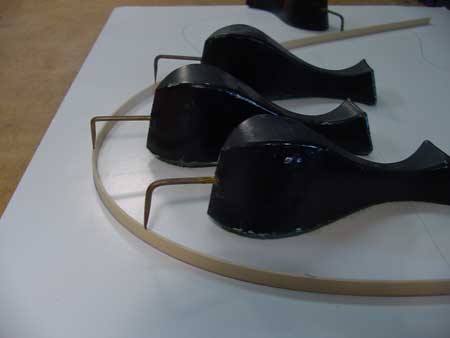
First after sketching the outline roughly, Ed lays the curve approximately where he wants it, and holds the curve in place with the weights. Notice that the entire weight is held about 1/8" off the paper by the rod, leaving only the tip of the tail in contact with the paper.
Then, he goes around the curve, lifting and replacing each weight in turn:
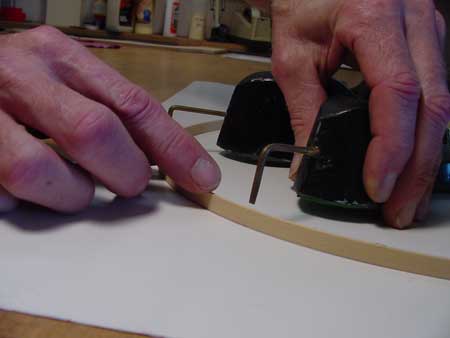
Wow! Just like magic, the wood strip springs out or in just a teeny bit to smooth out the curve. A couple of trips around the curve, and it comes out perfectly aligned. For sure, this is a trick that works so well, it is really not possible to describe adequately. You really should see it in action.
Working a section at a time, he gets each curve just right:
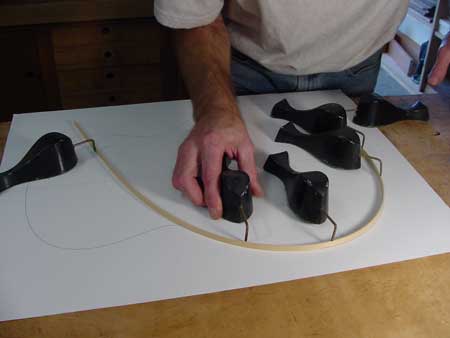
Total working time was almost nil.
Of course, it's no trick at all to draw a pencil line along this strip:
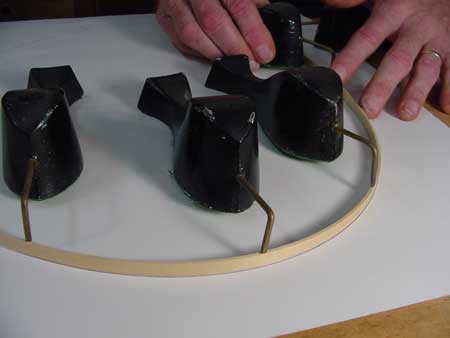
One thing for sure, before I try to draw out another body shape, I'll make some of these little weights for myself!